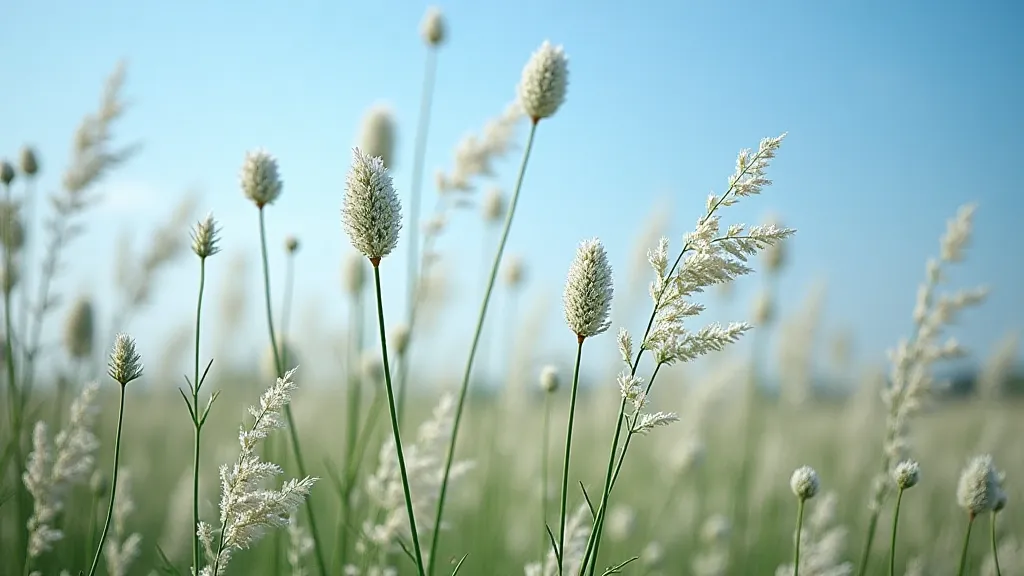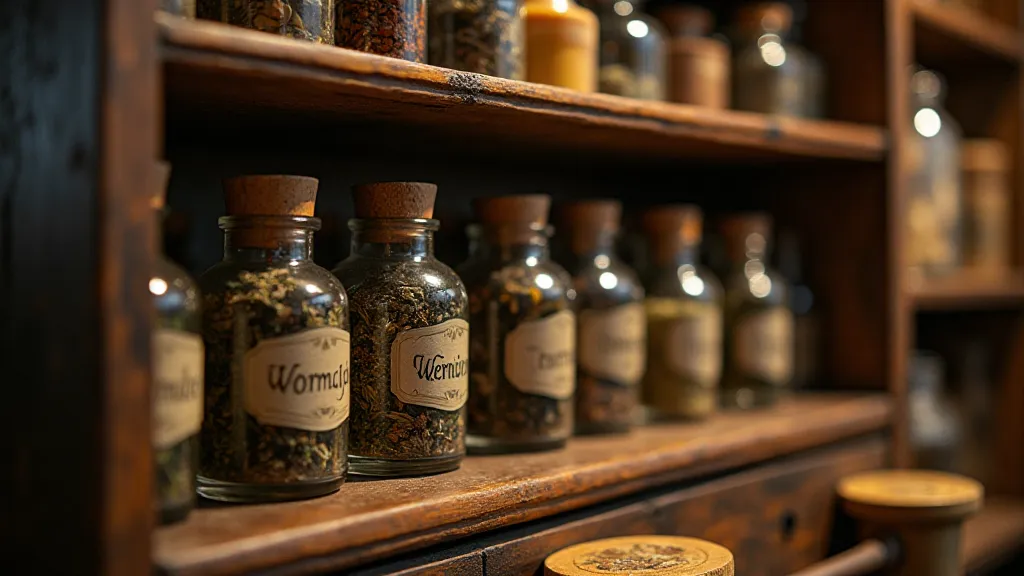The Alchemist's Compass: Navigating the Complexities of Wormwood
There's a certain melancholy that clings to antique accordions, a lingering echo of laughter and longing, of smoky cafes and traveling musicians. It’s a tangible sadness, a sense of stories left untold, much like the aura that surrounds Artemisia absinthium, more commonly known as wormwood. The name itself evokes a darkness, a whispered caution, yet within that darkness lies a profound depth of flavor and a history tangled with both healing and controversy. Cultivating wormwood isn't merely about adding another plant to your herb garden; it's about engaging with a legacy, understanding its power, and respecting its complexities.

A Legacy Shrouded in Myth and Medicine
Wormwood’s story stretches back millennia. Ancient Egyptians used it in mummification rituals, believing it possessed protective qualities. The Greeks recognized its medicinal properties, using it to treat intestinal parasites and promote menstruation. Roman physicians employed it as a digestive aid, and its usage continued through the Middle Ages, often as a component in herbal remedies. But it’s the 19th century that truly cemented wormwood's place in popular culture, intertwined with the rise – and subsequent fall – of absinthe.
Absinthe, the infamous "Green Fairy," was a potent, wormwood-based liqueur that became a symbol of bohemian Paris and the artistic avant-garde. Authors like Baudelaire and Verlaine, artists like Van Gogh and Toulouse-Lautrec, all found inspiration – and perhaps a degree of dependence – on this intoxicating brew. The belief that absinthe caused madness and hallucinations, fueled by sensationalized stories and the desire for moral condemnation, ultimately led to its prohibition across much of the world.
Cultivating the Shadow: Practical Considerations
Growing wormwood is remarkably easy, which is somewhat ironic given its reputation. It's a hardy perennial, thriving in full sun and well-drained soil. However, its ease of cultivation is tempered by its invasive nature. It spreads aggressively via rhizomes, quickly colonizing areas if left unchecked. Consider this carefully when choosing a planting location. A contained pot is often the best option, providing control over its spread.
The plant itself is unassuming – a bushy perennial with silvery-gray foliage and tiny yellow flowers. The leaves are highly aromatic, releasing a pungent, bitter scent when crushed. This intense aroma is a key indicator of its potency; the stronger the scent, the higher the thujone content (more on that shortly).
Harvesting is best done in late summer or early autumn, when the essential oil content is at its peak. Cut the stems back, leaving several inches of growth to ensure the plant’s survival. Dry the leaves and stems in a cool, dark place, protecting them from light to preserve their aromatic compounds.
The Thujone Conundrum: Risks and Responsibilities
The bitter flavor and purported psychoactive effects of wormwood are primarily attributed to a chemical compound called thujone. Thujone is a neurotoxin, and while present in relatively small amounts in dried wormwood, excessive consumption can lead to adverse effects, including seizures and hallucinations. It’s crucial to understand that wormwood is *not* a recreational drug. It should be treated with respect and consumed with caution.
The levels of thujone vary significantly depending on the plant's genetics, growing conditions, and harvest time. Regulations regarding thujone limits in absinthe vary by country, attempting to mitigate the risks associated with its consumption. As a gardener, you have a responsibility to educate yourself about thujone and to inform others about the potential risks associated with wormwood.

Beyond Absinthe: Medicinal and Culinary Uses
Despite its controversial history, wormwood retains legitimate medicinal and culinary applications. Traditionally, it's been used to treat a variety of ailments, including insomnia, digestive problems, and parasitic infections. However, it's vital to consult with a qualified healthcare professional before using wormwood for medicinal purposes. Self-treating with potent herbs can be dangerous.
In the culinary world, wormwood is used sparingly, primarily as a flavoring agent. Its intensely bitter flavor can add complexity to dishes, but it’s rarely used in large quantities. It can be found in some bitters, liqueurs, and traditional Eastern European recipes. A tiny amount can be infused into vinegar or oil to add a unique depth of flavor to salad dressings or marinades.
Ethical Harvesting and Sustainability
As with any wild-harvested plant, it’s essential to practice ethical and sustainable harvesting. Over-harvesting can deplete wild populations and damage ecosystems. If you’re harvesting wormwood from the wild, be sure to obtain permission from the landowner and to take only what you need, leaving plenty for the plants to reproduce and for wildlife to feed upon.
Growing your own wormwood is the most sustainable option. It allows you to control the plant’s cultivation practices and to ensure that it’s harvested responsibly. Plus, the act of nurturing a plant with such a rich and complex history can be incredibly rewarding.

A Legacy to Respect
Cultivating wormwood isn't simply about growing another herb; it's about connecting with a tangible piece of history. It's about understanding the complexities of a plant that has been both revered and vilified, embraced and rejected. Like the melancholic beauty of an antique accordion, wormwood holds a certain allure, a reminder of the power and fragility of human experience. Approach it with respect, knowledge, and a deep appreciation for its story, and you’ll find it to be a truly remarkable addition to your herb garden.




